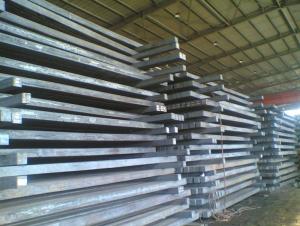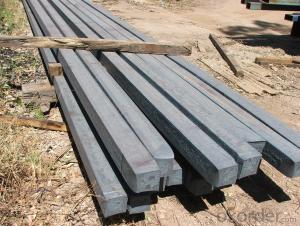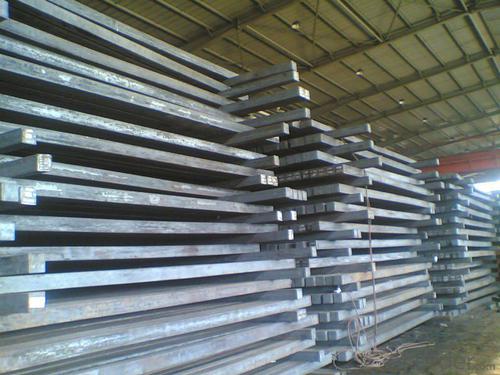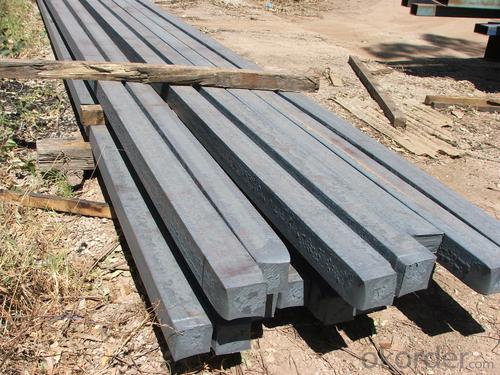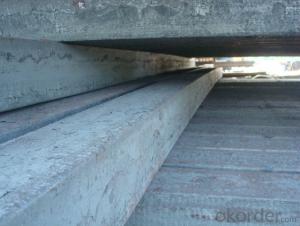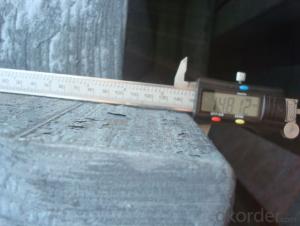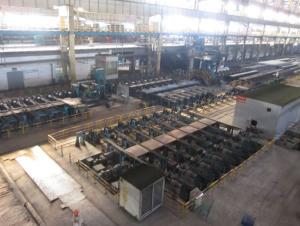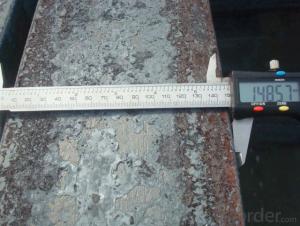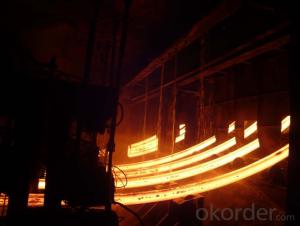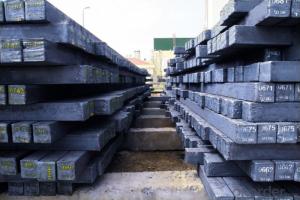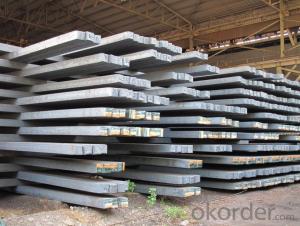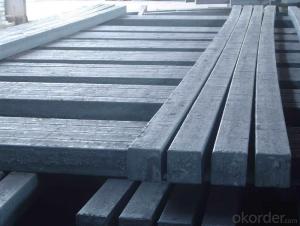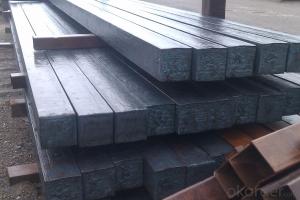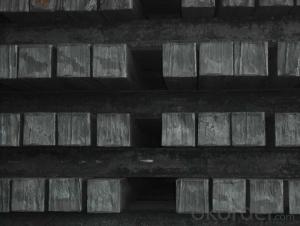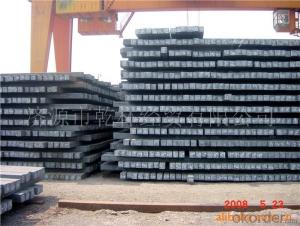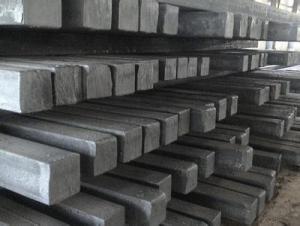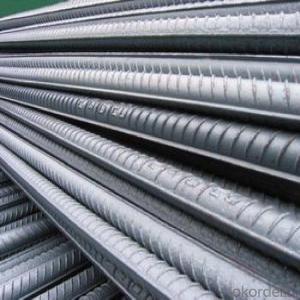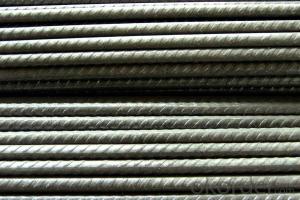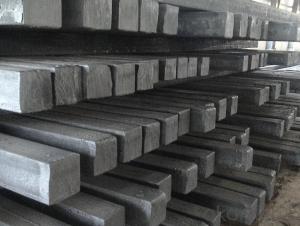Prime quality square alloy steel billet 175mm Q235
- Loading Port:
- Tianjin
- Payment Terms:
- TT OR LC
- Min Order Qty:
- 100 m.t.
- Supply Capability:
- 10000 m.t./month
OKorder Service Pledge
OKorder Financial Service
You Might Also Like
Structure of Prime quality square alloy steel billet 175mm Q235
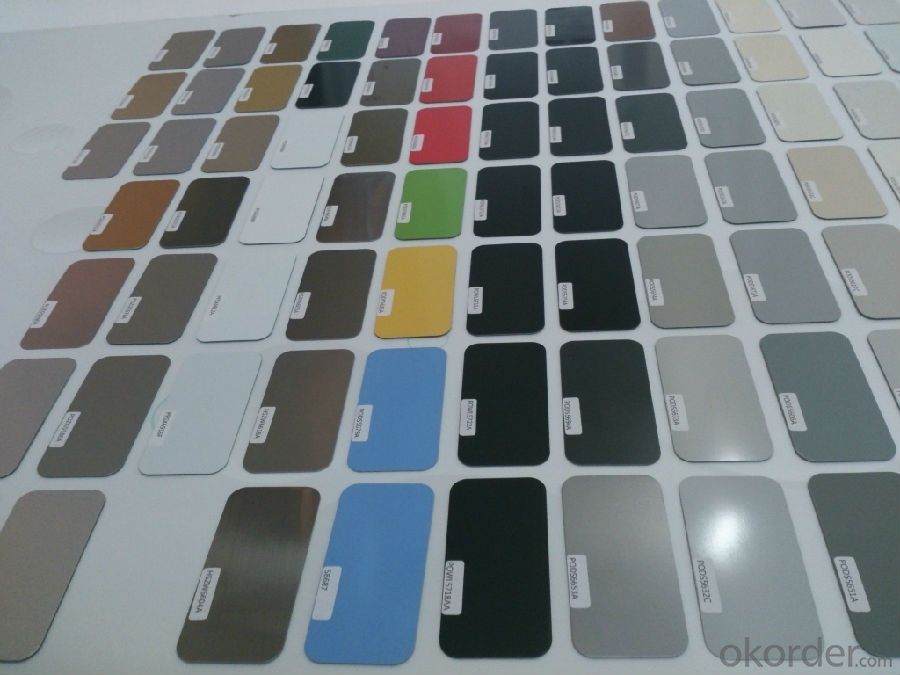
Description of Prime quality square alloy steel billet 175mm Q235
1. Prepainted steel coil is coated with organic layer, which provides higher anti-corrosion property and a longer lifespan than that of galvanized or galvalume steel sheets.
2. The base metals for prepainted steel coil consist of cold rolled, HDGI Steel, electro-galvanized and hot-dip alu-zinc coated steel. The finish coats of prepainted steel coil can be classified into groups as follows: polyester, silicon modified polyesters, polyvinylidene fluoride, high-durability polyester, etc.
3. The production process has evolved from one-coating-and-one-baking to double-coating-and-double-baking, and even three-coating-and-three-baking.
4. The color of the prepainted steel coil has a very wide selection, like orange, cream-colored, dark sky blue, sea blue, bright red, brick red, ivory white, porcelain blue, etc.
5. The prepainted steel coils can also be classified into groups by their surface textures, namely regular prepainted sheets, embossed sheets and printed sheets.
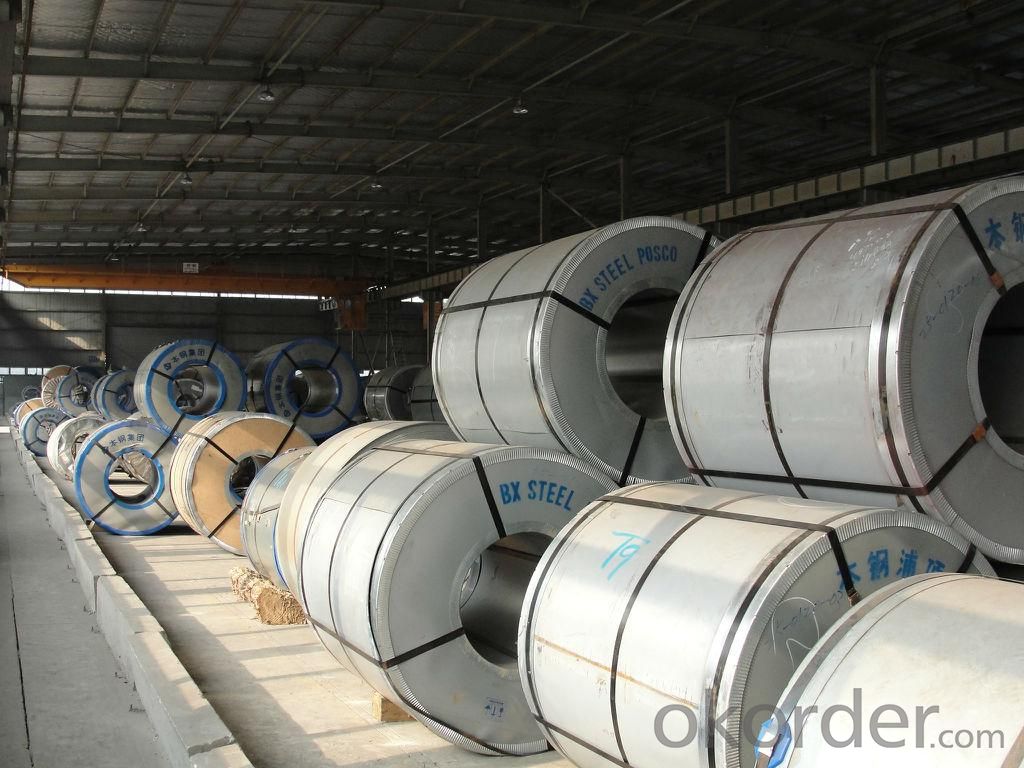
Main Feature of Prime quality square alloy steel billet 175mm Q235
Uncoated CR steel sheet
With the features of in line with the international highest standards in demension and shape, excellent surface finish and properties, the products are mainly used in home appliance and automobile industries.
Galvanized steel sheet(include HDG and EG)
With the features of good corrosion resistance, the products are mainly used in automobile, home appliance, electronics, building and machinery manufacture industries, etc.
Precoated steel sheet
With the features of enviromental protection and good processablility, long lasting surface durability, rich in colors, the products are maily used in building, home appliance and furniture industries, etc.
Applications of Prime quality square alloy steel billet 80mm Q235
Construction
Manufacture anticorrosion, industrial and civil architecture roof boarding, roof grille
Light industries
Home appliance's case, civil chimney, kitchen utensils
Auto industry
Corrosion resistant parts of cars
Agriculture
Food storage, meat and aquatic products' freezing and processing equipment
Commerce
Equipments to store and transport materials, and packing implements
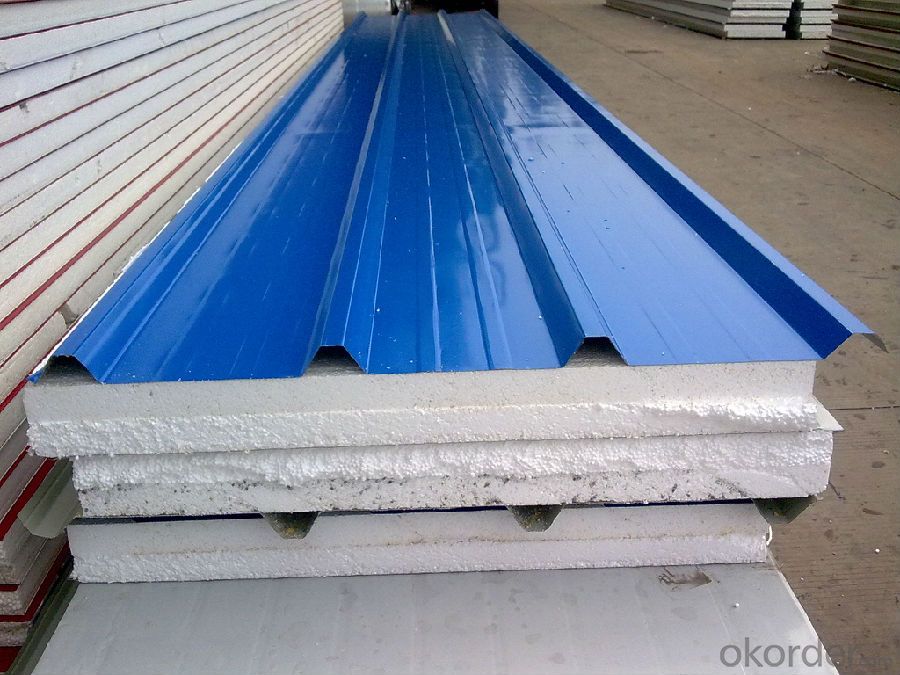
Specifications of Prime quality square alloy steel billet 175mm Q235
Product | Prime quality square alloy steel billet 175mm Q235 |
Material Grade | SGCC / SGCH / DX51D+AZ, etc |
Thickness | 0.6-3.0mm |
Width | 500-1500mm |
Tolerance | Thickness: +/-0.02mm , Width:+/-2mm |
Zinc-coating | Z30-150g/m2 |
Technique | Raw material: Hot rolled steel coil --> Cold rolled_>hot dipped galvalume |
Surface | Dried, Chromated, Unoiled |
Spangle | Regular spangle , small spangle, zero spangle |
ID | 508MM 610MM |
Coil weight | 1-25MT |
Export package | Cardboard inner sleeves, Waterproof paper, galvanized steel covered and steel strip packed |
FAQ of Prime quality square alloy steel billet 175mm Q235
We have organized several common questions for our clients,may help you sincerely:
1. How Can I Visit There?
Our company is located in Tianjin City, China, near Beijing. You can fly to Tianjin Airport Directly. All our clients, from home or aboard, are warmly welcome to visit us!
2. How Can I Get Some Sample?
We are honored to offer you sample.
3. Why choose CNBM?
Our delivery time about 15-20days for standard sizes, if you have other requirements like hardness, quanity and width ,it is about 20-40days. But don't worry we also try our best for the delivery time ,because time longer and our cost is higher.
- Q: What are the main factors affecting the tensile strength of steel billets?
- There are several main factors that affect the tensile strength of steel billets. Firstly, the composition of the steel plays a significant role. The presence of certain elements, such as carbon, manganese, and silicon, can greatly influence the strength of the steel. Carbon, in particular, is a key element in increasing the strength of steel through its ability to form strong interatomic bonds. Secondly, the heat treatment process employed during the production of steel billets is crucial. Heat treatment, such as quenching and tempering, can significantly enhance the tensile strength of the steel by manipulating its microstructure. Quenching involves rapidly cooling the steel, which creates a hardened structure, while tempering involves reheating the steel to a specific temperature to achieve the desired balance of hardness and toughness. Additionally, the grain size of the steel also affects its tensile strength. Fine-grained steel generally exhibits higher strength due to the increased number of grain boundaries, which act as barriers to dislocation movement. On the other hand, coarse-grained steel tends to have lower strength as it allows for easier dislocation movement. Moreover, the presence of impurities or defects in the steel can weaken its tensile strength. Inclusions, such as sulfur, phosphorus, and non-metallic inclusions, can act as stress concentration points and promote crack initiation, leading to reduced strength. Similarly, the presence of voids, porosity, or other structural defects can compromise the overall strength of the steel billets. Lastly, the processing conditions during the manufacturing of steel billets can affect their tensile strength. Parameters such as rolling and forging temperatures, deformation rate, and cooling rate can influence the resulting microstructure and, consequently, the strength of the steel. In conclusion, the main factors affecting the tensile strength of steel billets include the steel composition, heat treatment process, grain size, impurities or defects, and processing conditions. Understanding and optimizing these factors are crucial for producing steel billets with the desired mechanical properties.
- Q: How are steel billets recycled or reused?
- Various methods can be employed to recycle or reuse steel billets, which are semi-finished metal products. One commonly used method is electric arc furnace (EAF) steelmaking, where the billets are melted down in an electric arc furnace and utilized in the production of new steel products. This process effectively utilizes resources and aids in the reduction of greenhouse gas emissions and energy consumption compared to primary steel production. Steel billets can also be repurposed in industries like construction, automotive, and manufacturing. They can be transformed and reconfigured to create novel steel products or utilized as raw material for forging, rolling, or extrusion processes. By reusing steel billets, the industry can alleviate the demand for newly manufactured steel and conserve natural resources. Moreover, steel billets can be recycled through continuous casting. In this technique, the molten steel is poured into a continuous casting machine, resulting in the formation of solid billets. These billets can then undergo hot or cold rolling processes to produce various steel products such as bars, rods, or wire. Furthermore, steel billets can be melted and recast into different forms via remelting. Technologies like induction melting or vacuum arc remelting can be employed to purify the steel and achieve desired chemical and mechanical properties. Remelting facilitates the production of high-quality steel billets suitable for specialized applications in industries such as aerospace, defense, or medical sectors. In conclusion, steel billets are effectively recycled or reused through processes like electric arc furnace steelmaking, continuous casting, remelting, and reshaping. These methods not only contribute to the sustainability of the steel industry but also aid in resource conservation, emission reduction, and meeting the rising demand for steel products.
- Q: How are steel billets used in the manufacturing of forgings?
- The production of forgings relies heavily on steel billets, which are a vital raw material. These semi-finished steel products serve as the starting point for shaping and forming various types of forgings. To begin the process, suitable steel billets are carefully chosen based on their chemical composition and mechanical properties. Typically made from high-quality carbon or alloy steel, these billets undergo thorough inspection to ensure their suitability for the intended end product. Once the appropriate billets are selected, they are subjected to a series of heating and shaping procedures. These billets are heated in a furnace to a specific temperature known as the forging temperature, in order to enhance their malleability. Strict temperature control is exercised to optimize plasticity and minimize potential defects. Once the forging temperature is reached, the billets are transferred to a forging press or hammer. These powerful machines exert immense pressure to mold the billets into the desired form. The force applied causes the billets to deform and conform to the shape of the die or mold being used. To achieve the final desired shape, the forged billet may undergo additional steps such as trimming, piercing, or machining. These procedures are necessary to eliminate any excess material and further refine the forged part. The quality of the steel billets throughout the manufacturing process is of utmost importance, as it directly influences the final quality of the forgings. The billets must possess consistent chemical composition, mechanical properties, and be free from defects. This ensures that the forged parts exhibit the desired strength, durability, and dimensional accuracy. In conclusion, steel billets serve as the initial material in the manufacturing of forgings. Through heating, shaping, and other processes, these billets are transformed into the final forged part. The quality of the billets directly impacts the quality of the forgings, making the selection and inspection of billets a critical step in the overall manufacturing process.
- Q: How are steel billets used in the production of valves?
- Steel billets are an integral component in the production of valves as they serve as the raw material for manufacturing valve bodies. Valve bodies are the main structural component of valves, providing the necessary strength and durability to withstand the high pressures and temperatures they are subjected to in various applications. To produce valve bodies, steel billets undergo several manufacturing processes. Initially, the billets are heated and then passed through a series of rollers to shape them into the desired form, typically a cylindrical or rectangular shape. This process, known as hot rolling, enhances the mechanical properties of the steel, making it more suitable for valve applications. After the hot rolling process, the steel billets are further processed through forging or machining operations to refine their shape and dimensions. Forging involves applying compressive forces to the heated billets, reshaping them into the final valve body form. On the other hand, machining involves removing excess material through cutting, drilling, and shaping to achieve the desired dimensions and surface finish. Once the valve bodies are formed, further processes such as drilling, threading, and finishing are carried out to create the necessary openings, connections, and surface smoothness required for the valve's functionality. These processes may involve using specialized machinery and tools to ensure precise and accurate dimensions. Overall, steel billets are crucial in the production of valves as they serve as the starting point for creating the valve bodies. The properties of steel, combined with the various manufacturing processes, enable the production of high-quality valves that can effectively control the flow of fluids or gases in various industrial applications.
- Q: What are the potential applications of steel billets in the agricultural sector?
- The agricultural sector can benefit greatly from the various potential applications of steel billets. One primary use of steel billets in agriculture involves their utilization in the manufacturing of farm equipment and machinery. Plows, cultivators, and seeders, which are essential for tilling the soil, planting seeds, and maintaining agricultural land, can be produced using steel billets to create durable and sturdy components. Steel billets also find usefulness in the construction of storage structures on farms. Due to its strength and durability, steel is an ideal material for constructing grain silos, barns, and sheds. These structures provide long-lasting and reliable solutions for storing crops, livestock, and equipment. Furthermore, steel billets can be used to fabricate fences and gates for animal enclosures. Steel fences offer superior strength and security, ensuring the safety of farm animals and preventing them from wandering off. These fences are also resistant to corrosion and capable of enduring harsh weather conditions. Moreover, steel billets can be employed in the construction of irrigation systems and water management infrastructure on farms. Steel pipes and fittings are commonly used to transport water from a source to the fields, promoting proper irrigation and efficient water distribution. Lastly, steel billets can be employed in the production of machinery used for processing agricultural products. Grain mills, threshers, and sorting machines, for example, can be manufactured with steel components, aiding in the processing and packaging of crops. Overall, the potential applications of steel billets in the agricultural sector are extensive and diverse. From farm equipment and storage structures to fencing and irrigation systems, steel billets play a vital role in enhancing efficiency, durability, and productivity in agriculture.
- Q: What are the common sizes of steel billets?
- The sizes of steel billets can differ depending on the specific industry and application. However, there are various standard sizes that are frequently utilized. In the construction sector, steel billets commonly measure between 100mm x 100mm and 200mm x 200mm. These sizes are often employed in the fabrication of structural steel, such as beams, columns, and other load-bearing elements. For the production of automotive parts, the usual sizes of steel billets typically range from 150mm x 150mm to 250mm x 250mm. These sizes are commonly employed in forging and machining processes to manufacture components like crankshafts, connecting rods, and gears. In the oil and gas industry, larger steel billets are often necessary for manufacturing pipes and tubes. The typical sizes for this purpose range from 350mm x 350mm to 500mm x 500mm. These larger billets enable the production of seamless pipes capable of withstanding high-pressure environments. It should be noted that these are only general sizes and can vary depending on specific project requirements and regional standards. Additionally, customized sizes can also be produced based on the customer's requirements.
- Q: Are steel billets used in the aerospace industry?
- Yes, steel billets are used in the aerospace industry. They are often used as raw materials for manufacturing various components and parts, such as engine components, landing gear, and structural supports. Steel billets offer excellent strength and durability, making them suitable for aerospace applications that require high-performance materials.
- Q: What are the main factors that determine the sustainability of steel billets production?
- The sustainability of steel billets production is determined by several key factors. Firstly, the source of raw materials plays a crucial role in the sustainability of steel billets production. Using recycled scrap metal as the primary source of raw material reduces the need for new mining and extraction of iron ore, thereby minimizing the environmental impact associated with resource extraction. Secondly, energy consumption during the production process is a significant factor in determining sustainability. Steel production is energy-intensive, and the choice of energy sources can greatly impact its sustainability. The use of renewable energy, such as solar or wind power, can significantly reduce the carbon footprint of steel billets production. Thirdly, the efficiency of production processes and technologies employed in steel billets production is vital for sustainability. Modern technologies, such as electric arc furnaces, have higher energy efficiency and emit fewer greenhouse gases compared to traditional blast furnaces. Additionally, implementing waste heat recovery systems and optimizing material usage can further enhance the sustainability of steel billets production. Another crucial factor is the management of by-products and waste generated during production. Proper handling, treatment, and disposal of by-products and waste materials, such as slag and dust, are essential to minimize environmental pollution and ensure sustainability. Furthermore, the adoption of responsible and ethical practices throughout the supply chain, including labor rights, health and safety standards, and community engagement, contributes to the overall sustainability of steel billets production. Lastly, regulatory frameworks and government policies have a significant impact on the sustainability of steel billets production. Stringent environmental regulations, support for clean technologies, and incentives for sustainable practices can encourage the industry to adopt more sustainable production methods. In summary, the sustainability of steel billets production depends on factors such as the source of raw materials, energy consumption, production processes, waste management, ethical practices, and regulatory frameworks. By addressing these factors, the steel industry can strive towards more sustainable and environmentally friendly production practices.
- Q: How are steel billets inspected before they are used in production?
- Before being used in production, steel billets undergo a thorough inspection to ensure their quality and adherence to required specifications. The inspection process involves several key steps. Firstly, a visual inspection is conducted to examine the billets' surface for any defects such as cracks, seams, or deformities. Any irregularities can indicate potential weaknesses or problems that may affect performance during production. Secondly, dimensional inspection is performed to verify the billets' size, length, width, and other critical dimensions. This is crucial to ensure that the billets meet the precise requirements of the production process and can be seamlessly integrated into manufacturing operations. Thirdly, ultrasonic testing is often used to detect any internal defects or discontinuities within the billets. Ultrasonic waves are passed through the billet, and reflections or echoes are analyzed to identify any flaws such as voids, inclusions, or cracks that may compromise the billets' structural integrity. Moreover, magnetic particle inspection may be carried out to identify surface or near-surface defects that are not visible to the naked eye. This technique involves applying magnetic particles to the billet's surface and detecting any magnetic leakage caused by defects through the use of magnetic fields. Additionally, chemical analysis is frequently performed to ensure that the steel billets have the desired chemical composition. This involves taking samples from the billets and subjecting them to various tests to determine the percentages of different elements present. This analysis guarantees that the billets possess the necessary chemical properties for the intended application. In conclusion, steel billets undergo a comprehensive inspection process that includes visual examination, dimensional verification, ultrasonic testing, magnetic particle inspection, and chemical analysis. This multi-faceted approach ensures that the billets meet the required quality standards and are suitable for use in production, minimizing the risk of any performance issues or failures during manufacturing processes.
- Q: How do steel billets contribute to the transportation industry?
- Steel billets are a vital component in the transportation industry as they are used to manufacture various parts and components for vehicles. These billets are transformed into products like engine blocks, chassis frames, axles, and suspension systems, which provide strength, durability, and stability to vehicles. Additionally, steel billets are also used to produce railway tracks and infrastructure, ensuring safe and efficient transportation of goods and people. Overall, steel billets play a crucial role in enhancing the performance, safety, and reliability of transportation systems.
Send your message to us
Prime quality square alloy steel billet 175mm Q235
- Loading Port:
- Tianjin
- Payment Terms:
- TT OR LC
- Min Order Qty:
- 100 m.t.
- Supply Capability:
- 10000 m.t./month
OKorder Service Pledge
OKorder Financial Service
Similar products
Hot products
Hot Searches
Related keywords
